Pain Management – Delray Beach, FL
Live a Comfortable
Life Again
Our physicians at the Institute for Non-Surgical Orthopedics provide conservative treatment options for pain management in Delray Beach, FL that are designed to safely and effectively alleviate chronic back pain as well as degenerative spinal and joint ailments. For most patients, all it takes is a few gentle injections to achieve pain relief and live a comfortable life again.
Why Choose the Institute for Non-Surgical Orthopedics
for Pain Management?
- Target the Source of the Pain with Trigger Point Injections
- Relieve Chronic Discomfort Without Surgery or Medication
- Botox Treatment That Quickly Stops Migraines
Trigger Point Injections
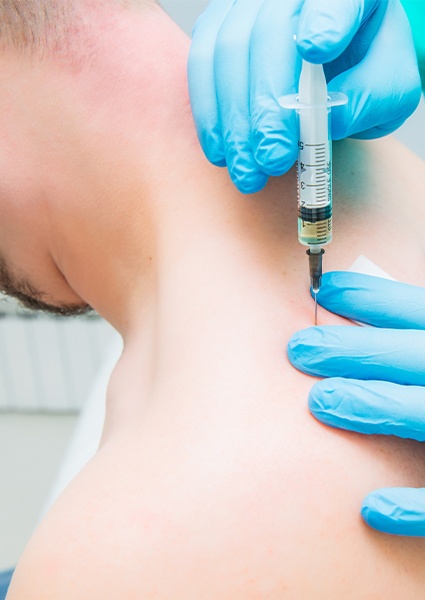
A trigger point is a small section of the body that experiences intense, highly concentrated sensitivity and/or pain. Often, our doctors can put a stop to this discomfort by administering a direct injection – usually consisting of a local anesthetic like lidocaine – to the site. Not only does this bring instantaneous pain relief, but it causes the area to relax, encouraging the body to recover. Eventually, the trigger point will disappear completely.
Interventional Spine Injections
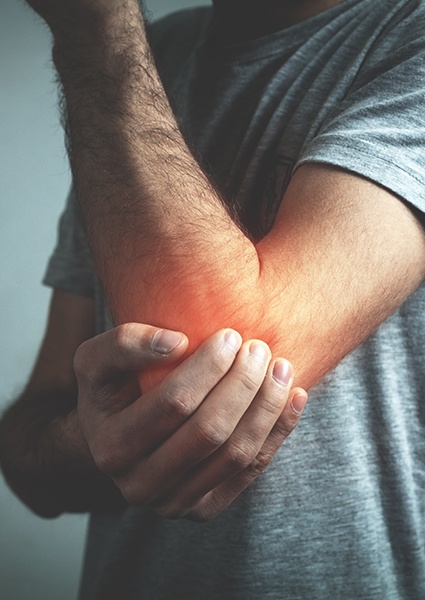
The spine has an intricate structure that involves bones, discs, nerves, muscles, and tendons working in harmony. Even the smallest injury to one of these elements can result in back pain. For quick healing and lasting relief, it’s essential to treat the precise area of the body, which can do with interventional spine injections. By targeting the problem area and administering the correct solution (such as corticosteroids, anesthetics, or Whartons Jellytic growth factors), we can promote recovery in the exact place where your body needs it.
Viscosupplementation
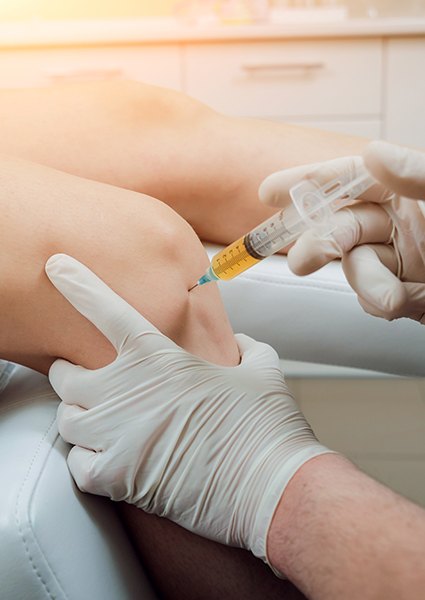
To minimize joint pain and stiffness, we may recommend an injection treatment called viscosupplementation. While it can be administered to any joint, the FDA has only approved it for knee osteoarthritis. These injections contain a viscous or gel-like synthetic material that functions like natural joint fluid. In effect, they provide lubrication for the joint, lessening irritation caused by bone-on-bone friction or deterioration of cartilage (a common occurrence with osteoarthritis). One of these series of injections can provide incredible relief for 6 to 18 months. During that time, we may suggest other treatments to heal the joint.
Learn More About Viscosupplementation
Facet & Epidural Blocks

Facet injections and epidurals are advanced methods of managing back pain. With epidural steroid injections, we usually use one of three kinds of injections: caudal, interlaminar, or transforaminal. All three entail applying corticosteroids directly above the dura mater – the thick, protective membrane that surrounds the spinal cord. Research has demonstrated that these injections are successful in treating a range of conditions, including stenosis, sciatica, and herniated discs.
Learn More About Epidural & Facet Joint Injections
Radiofrequency Ablation
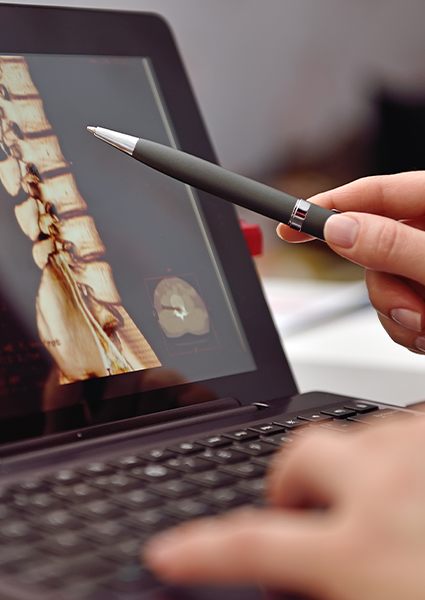
Following successful diagnostic interventional injections, we may use a type of therapy called radiofrequency ablation (RFA). This method pinpoints the specific facet joints on the medial branch of the spine, which control how pain in the spine is registered. With RFA, our doctors inject a needle that actually produces radiofrequency energy, allowing it to denature the nerve. Compared to spinal surgery, RFA is significantly less invasive.
Learn More About Radiofrequency Ablation
Radiofrequency Ablation Frequently Asked Questions

“Radiofrequency ablation” is a bit of a mouthful and not a treatment that most people have heard of, so it’s perfectly reasonable if you have questions about it. To learn a little more about some of the basics, just read our answers to the popular questions below. Of course, you are always welcome to give us a call to ask anything else that is on your mind.
What conditions can be treated using radiofrequency ablation?
Chronic low back pain and neck pain are the conditions most often treated using radiofrequency ablation, but it has also been shown to help those dealing with knee pain, whiplash injuries, complex regional pain syndrome (CRPS), as well as headaches and migraines.
What are the benefits of radiofrequency ablation?
The documented benefits of radiofrequency ablation include:
- Being able to stop chronic pain for nine months and up to two years with a single treatment.
- Enables patients to avoid long-term use of medication or surgery.
- Often can provide immediate pain relief.
- Little-to-no recovery time and minimal side effects (slight redness and tenderness near the treatment area).
- Better back and joint mobility, strength, and stability.
Does radiofrequency ablation hurt?
Fortunately, radiofrequency ablation is very comfortable when performed by a skilled doctor using anesthetic. The patient is asked to sit or lie down throughout the appointment, and after the treatment area is numb, fluoroscopy is used to guide the injections that denature the nerve using radiofrequency energy. Throughout the process, the patient should basically feel nothing, though there might be some swelling and inflammation afterward that can be managed with corticosteroids.
What is the recovery process like?
It may take a month or more before the full effect of the treatment becomes apparent. But, after the initial recovery period, the associated pain relief should last for about a year or more. In the first few days following the procedure, the patient will be asked to not exercise, operate heavy machinery, or expose the treatment area to water (i.e. bathing or swimming).
Are there any side effects of radiofrequency ablation?
Some common side effects of radiofrequency ablation are:
- Minor bruising or bleeding at the injection site.
- Slight soreness near the treatment area.
- Leg numbness.
- Small chance of an allergic reaction to the numbing agent.
Fortunately, these symptoms tend to be minor in most cases and can be expected to go away on their own after 72 hours. A cold compress can be used to minimize any swelling or discomfort as well.
Botox for Migraine, Spasticity, and Cervical Dystonia

Made from a byproduct of the bacterium Clostridium botulinum, Botox is a drug that, in small doses, can address a variety of health conditions. At the Institute for Non-Surgical Orthopedics, we follow a specific, proven protocol when using Botox to treat chronic migraines, the involuntary muscle contractions of dystonia, and muscle spasticity (stiffness) following a stroke or in patients with post-polio syndrome.
Chronic Pain Management
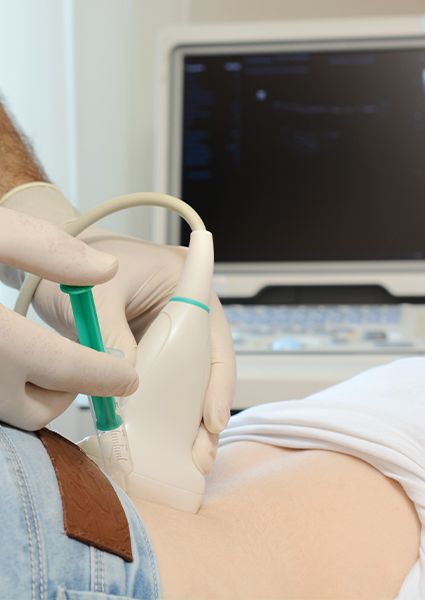
Our specialists at the Institute for Non-Surgical Orthopedics have completed advanced training in the treatment of individuals suffering from chronic pain. Whether your case involves several injections, physical interventions, or medical management, rest assured that we’ll maximize our resources to bring you relief in the least invasive manner – and prescribe the minimal dose of medication – possible.









